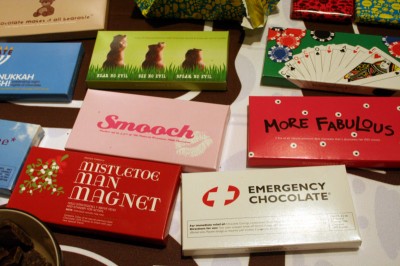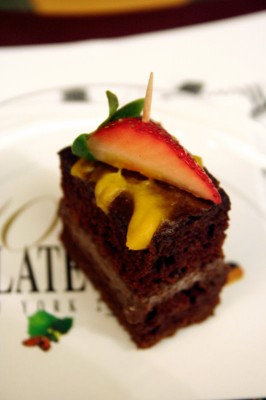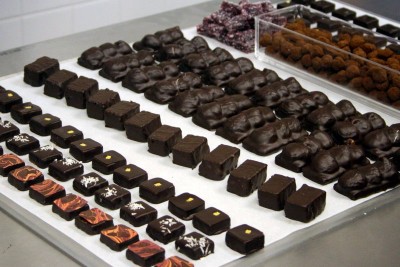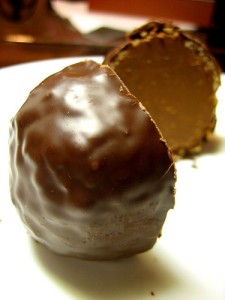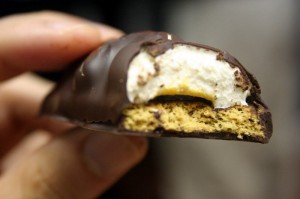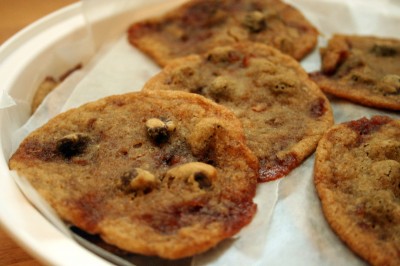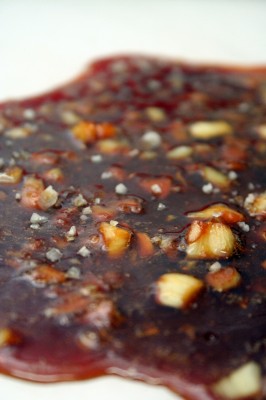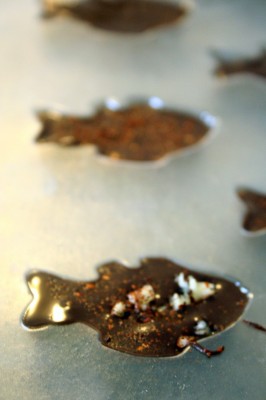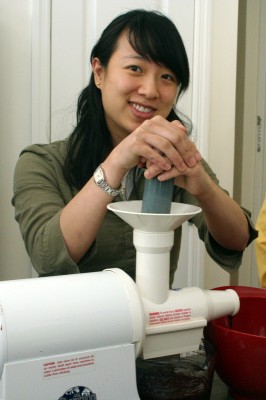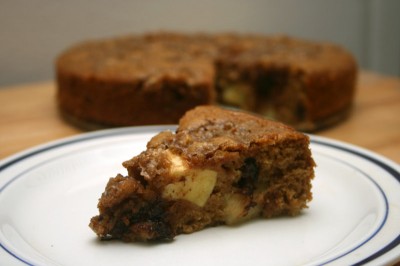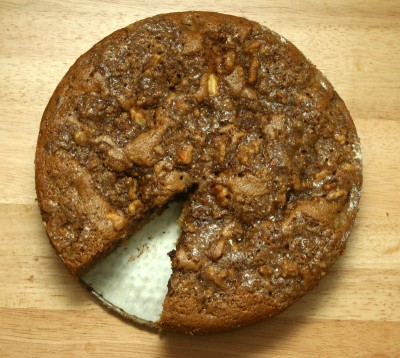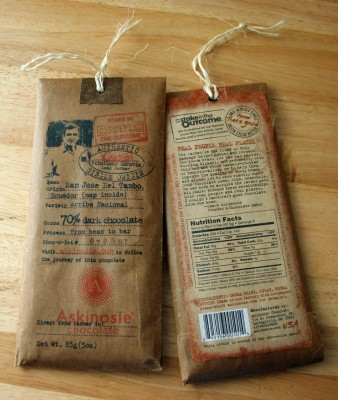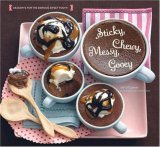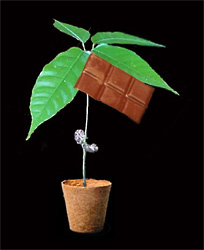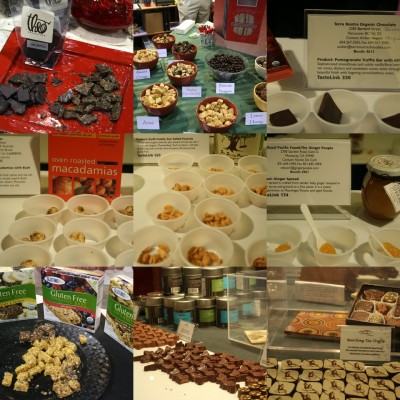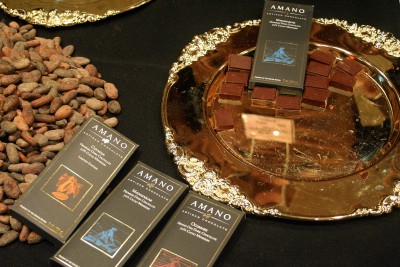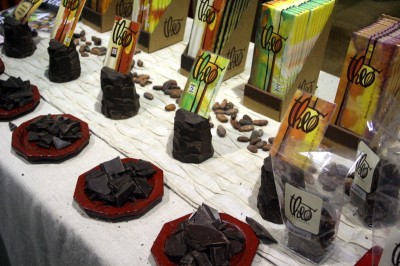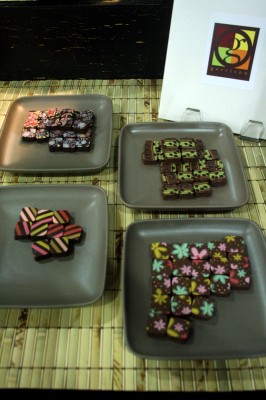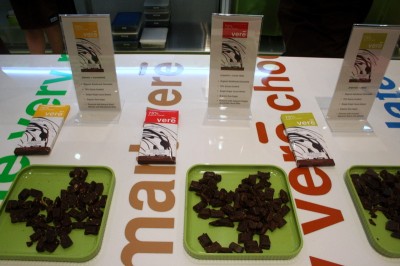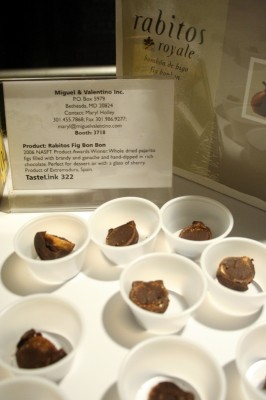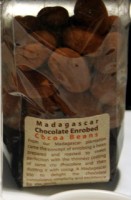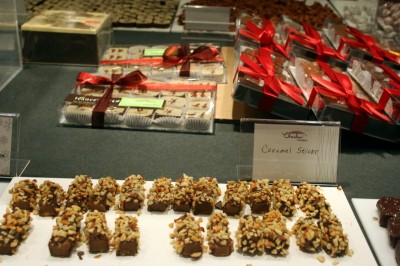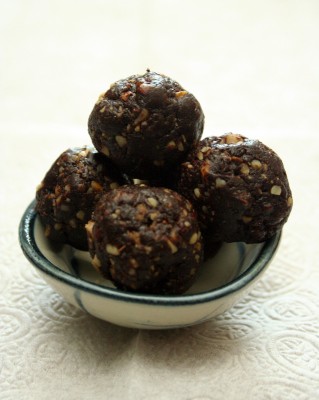Chocolate Show Gripes
It’s hard to believe that chocolate can make someone grumpy, but that was the case at New York’s 10th annual Chocolate Show last Friday. The show has declined in recent years, with cheap-o brands slowly taking over the artisan booths. Of course there were stand-outs, but do you really need another cliche “chocolate is delicious” wrap-up? Instead, I’m going with the more entertaining (and arguably more useful) Worst in Show.
Greedy if you ask me!

Photo: Niko/Dessert Buzz
When the Chocolate Show first began, it only cost $5 to get in and sample chocolates from all over the world. Two years ago, the admission ballooned to $25, and this year, it again rose to $28. In the words of a fellow chocolate lover: “Greedy if you ask me!” Upon entering, the coat check costs $2 (you can’t really skip out on this in chilly NY), and water costs another $2 (you need something to wash all that chocolate down). You’ve just spent $32 without eating a single piece of chocolate.
Sample Snobbery
A note to the booths: please stop hiding your samples. Visitors just spent $28 on admission and are entitled to a taste. They don’t enjoy inquiring about a possible sample, hearing a long sales pitch and then getting their requisite treat at the end. Ironically, the more the vendors gushed about their chocolate, the worse the product tended to be.
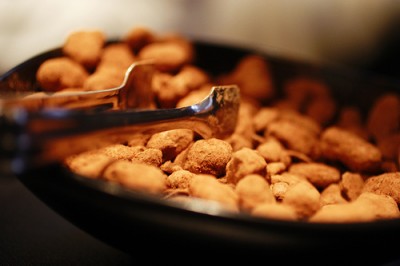
Photo: Robyn Lee/The Girl Who Ate Everything
Some vendors offered samples up front, but they came with tweezers and little spoons. I understand we’re all concerned about cleanliness, but when there’s 20 people waiting in line, using chopsticks to pick up pebble-sized chocolates is hardly efficient. At the very least, please offer more than one spoon per bowl. And when vendors slice a piece of a truffle and insist on handing it to me, I just think, “I’m perfectly capable of picking up my own chocolate!” True, there are some people who horde samples in plastic containers, but it’s not fair for the rest of us.
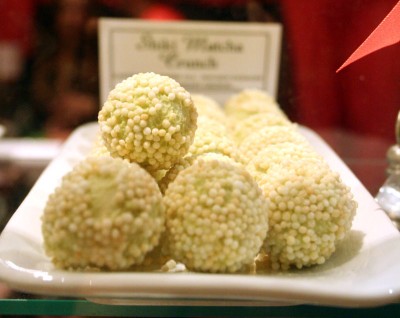
Shiki Matcha Crunch truffles, why must I pay $2 to sample you?
The worst policy is not even offering samples at all. I think the chocolates should sell themselves, and if I can’t try them, I won’t buy them.
The Bad and the Irrelevant
Being a chocolate show, you’d think that every booth sold something related to chocolate. Let’s just say that this year’s show offered one-stop shopping, so you could get a Capitol One Visa card, a subscription to the NY Times and book a Marriott vacation.
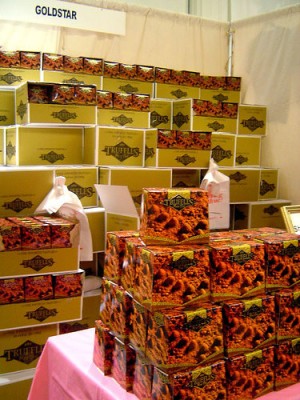
Photo: Robyn Lee/The Girl Who Ate Everything
Two booths sold cocoa-rolled truffles that were ostensibly from France and had hydrogrenated vegetable oil. The French would roll in their graves if they had to eat these!

Photo: Niko/Dessert Buzz
Mars also had their own booth. Not only were they out of place, but they pretended to be up to par with the prestige chocolatiers. They bragged about selling 100% real chocolate, but did you know that they’re part of the Chocolate Manufacturer’s Association, the same trade group that wanted to replace cacao butter with shortening in chocolate? Last month, Mars turned around and said they’d only sell chocolate with 100% cocoa butter, as they always have. That’s not true. Dove dark chocolate (which I admit tastes pretty good) has milk fat and technically isn’t pure chocolate.
Bueller, Bueller, anyone?
The same chocolate lover above reported that some exhibitors had no idea where their cacao beans came from or whether they were bought for a fair price. Call me a snob, but how and where cacao is grown makes a world of difference in the finished product. When vendors don’t know their product, it’s unattractive to the consumer.
In another puzzling case, Gobo restaurant demoed a vegan chocolate cake, which called for vegan flour and vegan cocoa powder. It pains me to say this, since Gobo and its sister restaurant, Zen Palate, are among my favorites in the city (and the owners are really nice), but I almost laughed at those ingredients. Flour comes from a plant. Cocoa comes from a plant. When are animals involved? If you can find me animal-derived cocoa, I’ll give you a lifetime supply of vegan cocoa as a consolation.
For the Chocolate Show highlights, visit Dessert Buzz and NYCnosh.

